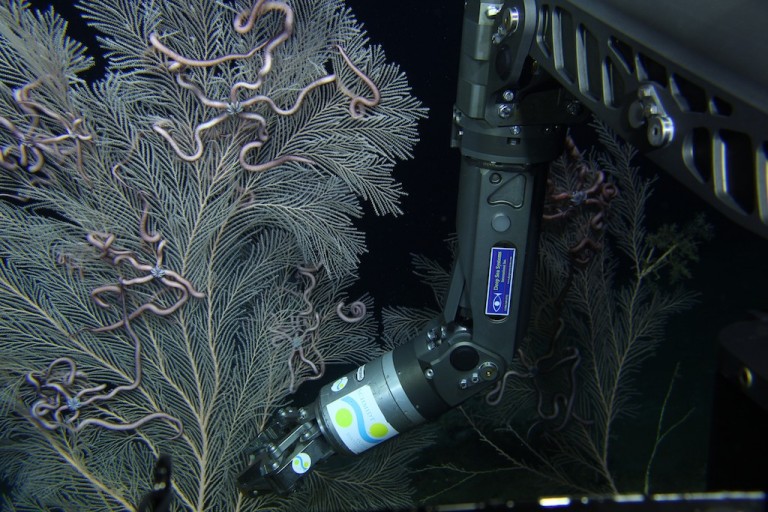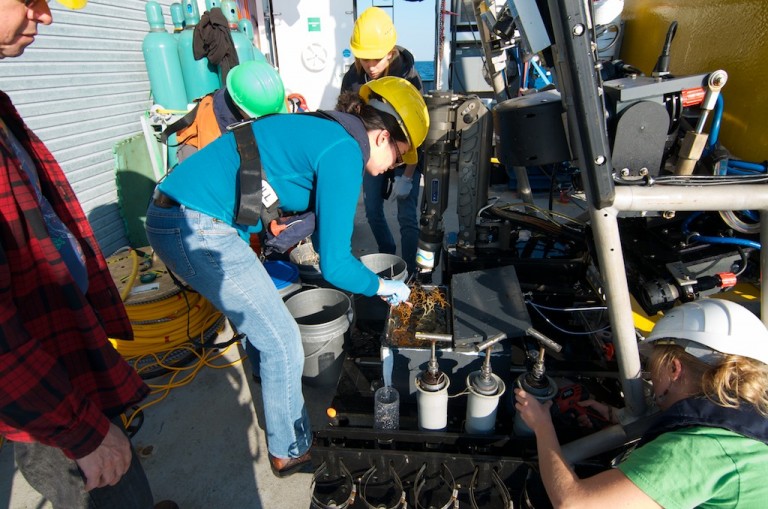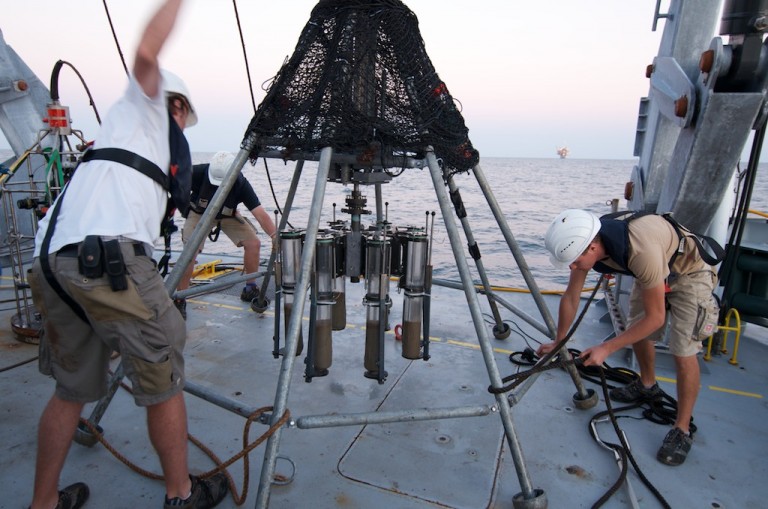Today’s ROV dive focused on collecting live specimens of two deep-sea coral species for onboard laboratory experiments. Graduate students Dannise Ruiz and Danielle Young will use these specimens to investigate how corals respond to different concentrations of oil and dispersant in controlled settings.

ROV Global Explorer MK3 was launched to the seafloor at 500 meters depth where colonies of black coral Leiopathes and octocoralCallogorgia were interspersed on rocky outcroppings. Dannise and Danielle took turns working with the pilots in the ROV control room as they were clipping pieces of targeted corals. ROV pilots skilfully positioned dexterous ROV manipulator arm to grasp and precisely clip portions of corals and place them into collection quivers and the bio box. After coral collections were accomplished, the ROV took push core samples in nearby sediments. As the ROV ascended to the surface, sea water samples were also captured at various depths by the niskin bottle rack mounted on the side of the vehicle. All collections were completed by mid-afternoon and the ROV returned to the ship leaving time for multicore deployments.

The scientists were particularly interested in monitoring the temperature changes inside of the ROV’s insulated bio box as it was transported through the warm surface waters. Temperature changes can be stressful and even lethal for deep-sea organisms that are adapted to narrow temperature ranges. The bottom temperature here at 500 meters depth was about 6°C while at the surface, it was a much warmer 22°C. Researchers measured the water temperature within the bio box when the ROV was recovered to the deck, and found that the temperature had warmed, but only to 11°C.
Danielle and Dannise quickly offloaded all of the coral specimens and transferred them into cold aquaria in the cold van. The specimens will be allowed to settle through the night. Danielle and Dannise plan to wake up before sunrise tomorrow morning to begin experimental treatments of the collected live corals that will run for the following 24 hours.

Two multicore deployments followed today’s ROV dive aiming to collect local seafloor sediment samples. R/VFalkor then transited to an area southwest of the Macondo wellhead where natural plumes were detected as a result of multibeam surveys during the first leg of this cruise. R/V Falkor was re-tracing the earlier multibeam survey path in this area throughout the night.
Tomorrow, ROV Global Explorer MK3 will operate at an established research site where Dr. Chuck Fisher and colleagues have previously documented the effects of Deepwater Horizon disaster on coral communities. The resulting survey data will contribute to the long-term monitoring efforts of all coral colonies at this site.
